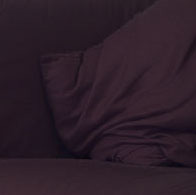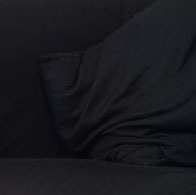CameraQuest Home Camera Articles FOR SALE Orders I Buy / Wants Repairs Books Adapters
Epson R-D1: Infrared sensitivity
The Epson R-D1 sensor is more sensitive towards infrared (IR) light than some digital cameras (but much less so than the Leica M8), and objects that are good reflectors of IR light can show red-shifted colour casts: faces can look sunburnt, black synthetic fabrics appear purple, etc (Figure 1, left). Items made of black plastic (e.g. clothing) are the worst offenders.
However, although this IR sensitivity can create unwanted colour contamination, it can benefit monochrome photos by enhancing the tonality of black objects.


Figure 1. IR sensitivity of the Epson R-D1 and black synthetic fabrics (armchair/cushion). Left: untouched photograph without an IR filter. Right: photograph taken with a B+W 486 filter.
One solution is to adjust the colour cast in a program such as Photoshop; the drawback is that you will have to recall which of the magenta/purple objects were truly that colour or were actually black. There a various ways to tackle this problem in Photoshop, one of which is:
- Use Select > Color Range to select the problem area as accurately as possible (i.e. reds/magentas only).
- Go to the Layers palette and create a Hue/Saturation adjustment layer. Using the Hue/Saturation dialog box that appears, reduce the saturation and lightness of the reds and magentas until the area looks neutral.
- To recover any areas that should legitimately be red/magenta or have a colour cast, paint over these areas on the layer mask, using black.
The more elegant solution is to fit an IR-blocking filter such as the Heliopan Digitial UV/IR filter or the B+W 486 filter (Figure 1, right).
 Infrared sensitivity
Infrared sensitivity